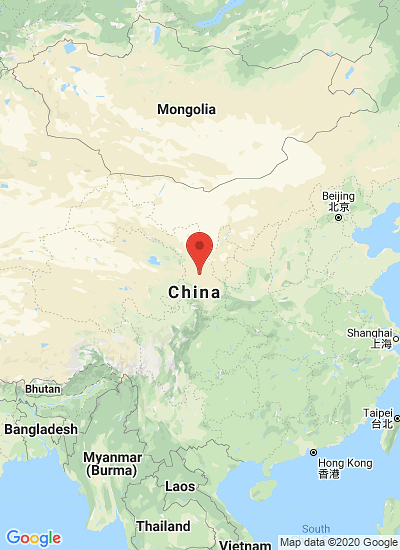The Agras T10
Primaire tabs
Drones in Agriculture: How agriculture drones are changing how farmers work
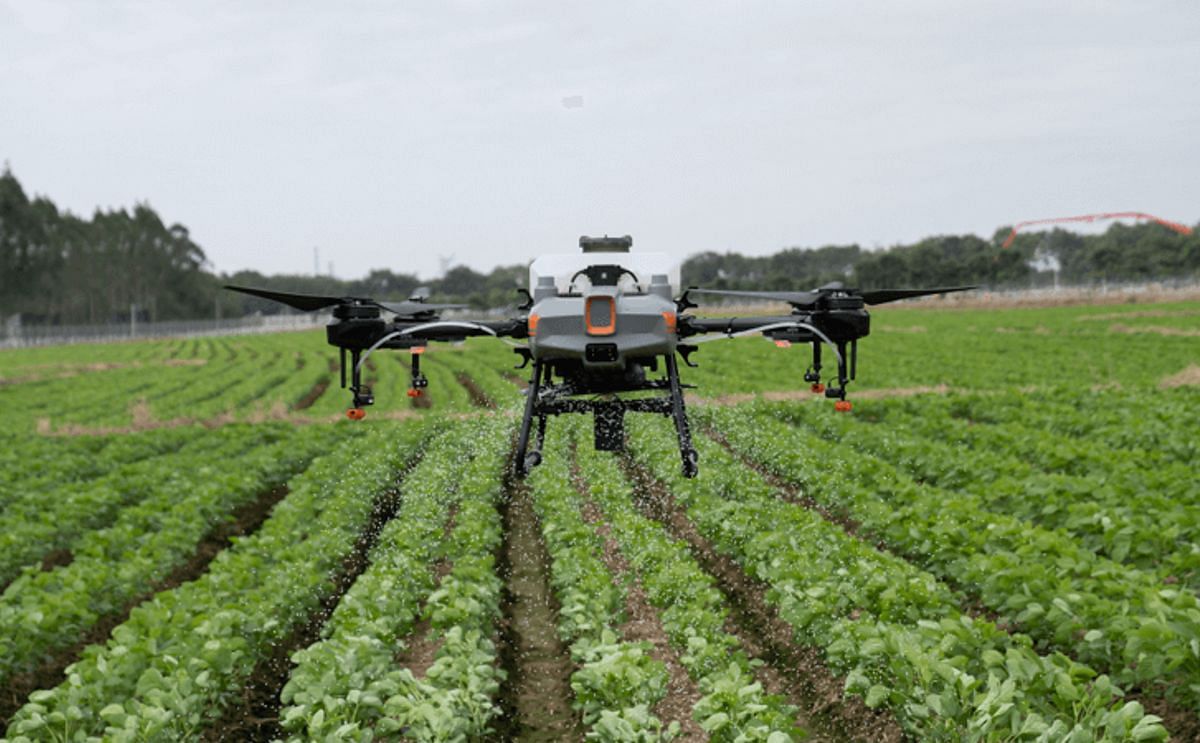
Agriculture drones can be used to do anything from precision agriculture, to efficiently dispersing weed control or fertilizers, to optimizing field management. Drone manufacturer DJI shares its insights.
It used to be that agriculture involved quite a bit of guesswork: What would the weather patterns be? What kind of crop yield could be expected? Over the years, farmers have found innovative ways to answer these questions as much as possible with new technologies. Agriculture drones are the next step in this process.
Agriculture drones can be used to do anything from precision agriculture, to efficiently dispersing weed control or fertilizers, to optimizing field management. The results include reduced operation costs, improved crop quality, and an increased yield rate.
The rapidly changing world of agriculture The farming operations of today look quite different than even a few decades ago. New technology has allowed the growers of today to optimize each part of their operations — from field spraying to grow cycles and crop health.
A big part of that transformation can be attributed to drones and other types of unmanned aerial vehicles (UAV). With an agriculture drone, farmers get in-depth data analysis and mission planning as well as new tools capable of handling physical work.
Whether you’re an independent farmer or a leader of a larger organization, drone technology can help you beat your harvest goals and yield more crops with fewer resources. Two of the main ways that the right UAV and payload can help are efficient crop spraying and field mapping.
Spraying a field with a UAV
The Agras line of spraying drones from DJI can help precisely deliver the following:
- Fertilizer
- Herbicide
- Fungicide
- Pesticide
- Seeds
- Desiccants
The efficient application of the above is a persistent challenge for any grower. If you spray too much concentrated in one place, you run up extra costs and potentially decrease the quality of your produce.
Too low a concentration, however, and you leave your crops vulnerable to being overgrown with weeds, malnourished, or eaten by insects and other predators — potentially decreasing the yield rate.
However, the right farming drones and spraying payloads can distribute chemicals evenly and efficiently.
The results? Improved crop quality and a higher yield rate without intense manual labor. DJI drones can be used on nearly any kind of crop, including rice, wheat, corn, citrus trees, cotton, and much more.
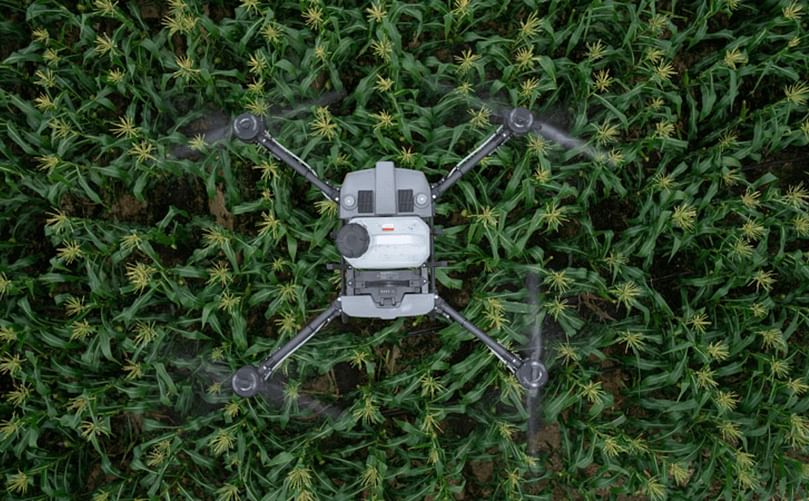
The Agras T10 overhead
With climate change and development expected to eat into the total amount of land globally available for farming, effective land use will be key to maintaining successful results in the years ahead.
Using drones to gather data for precision agriculture
Smart spraying and seeding aren’t the only ways to increase overall agricultural efficiency, cut costs, or increase yields. Drones can also be used to map out an area and create new insights — taking the guesswork out of much of the growing process.
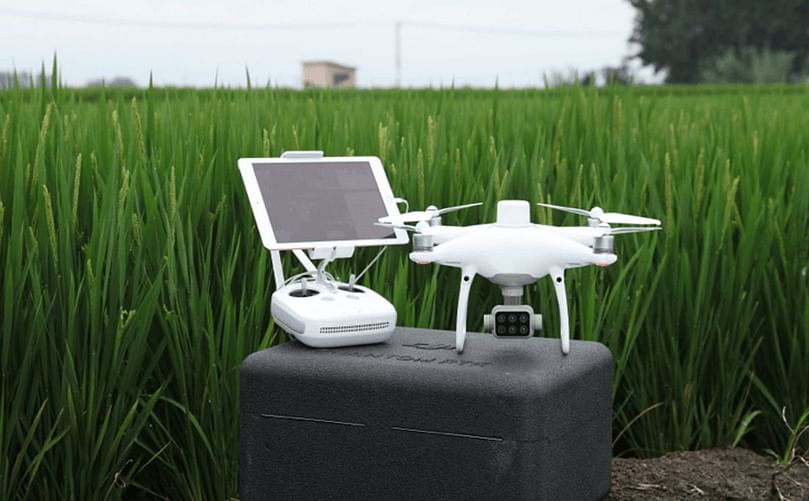
The P4 Multispectral
This means that they can capture light sensors both visible and invisible within a set range. Two key types of maps that can be created with this kind of agricultural drone include:
RGB maps: A birds-eye view but even better, even a basic Red Green Blue (RGB) map can offer fresh information.These maps allow you to see exactly how much land you have to grow on to the centimeter and assist with crop monitoring over an extended period of time, helping you adjust from season to season.
NDVI maps: Normalized Difference Vegetation Index (NDVI) takes the insights of an RGB map one step further. The map shows the amount of infrared light reflected in an area, which is an indicator of malnourishment and drought.
According to Go Intelligence, this kind of data collection can be used to spot problem crops as much as two weeks before physical signs emerge, making it an invaluable tool for farmers trying to accurately predict their yield rate.
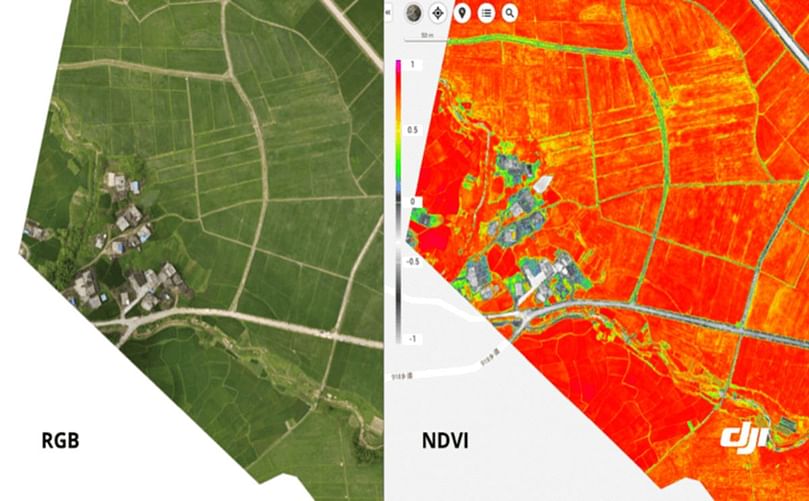
Examples of maps generated using drone data.
When you’re looking for the best in agricultural technology, you want the drones and payloads of DJI. Their solutions are designed with the needs of growers in mind. DJI drones have sprayed over 350,000 square kilometers to date, and that’s just based on data that was manually uploaded by users.
Their top agricultural drones include:
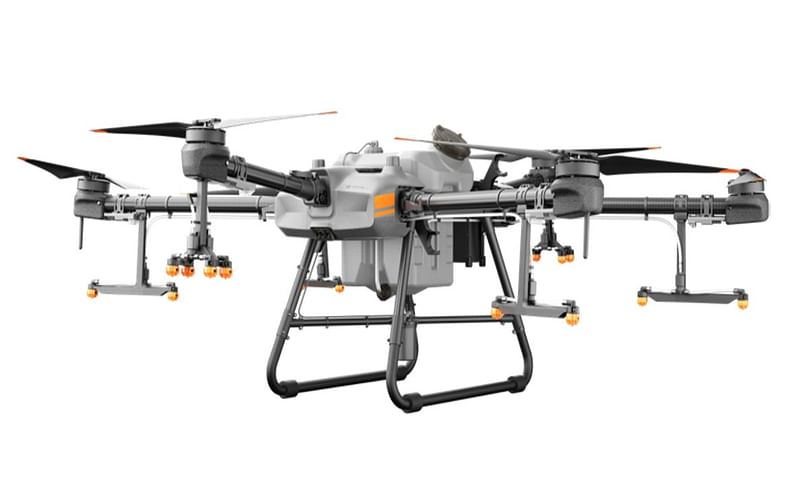
The Agras T30 (or T20 or T10)
The mighty T30, however, isn’t the only drone Agras drone to choose from. The Agras T10 and Agras T20 are each designed to offer the same crop spraying capabilities but are more ideal for smaller and mid-size fields.
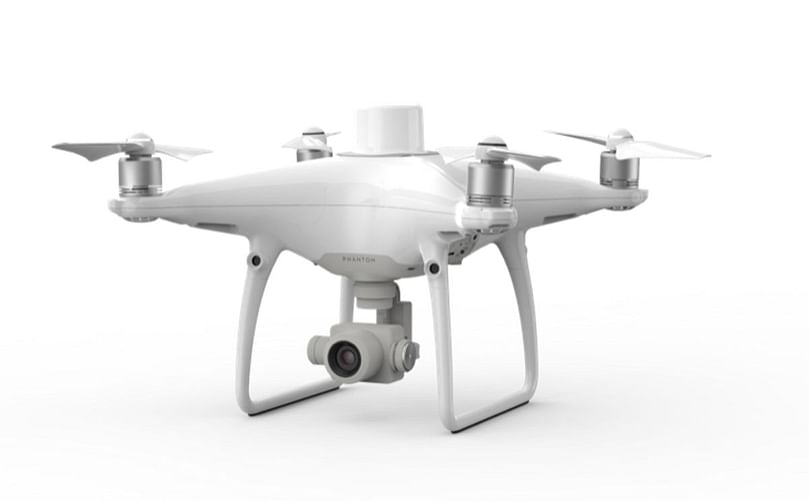
Phantom 4 RTK
The new TimeSync system continually aligns the flight controller, camera, and RTK module for fixed positioning data you can trust. This drone is the perfect complement to any surveying job, from the farm to the construction site.
Designed with the agriculture sector in mind, the P4 Multispectral blends perfectly into your workflows. Using this tool takes advantage of multispectral imaging to gain immediate insights into your plants’ health. Features include an integrated spectral sunlight sensor and an RTK Module that allows for accuracy down to the centimeter.
In addition to drones, DJI offers agriculture-specific payloads designed to take on some of the top challenges in the sector, including:
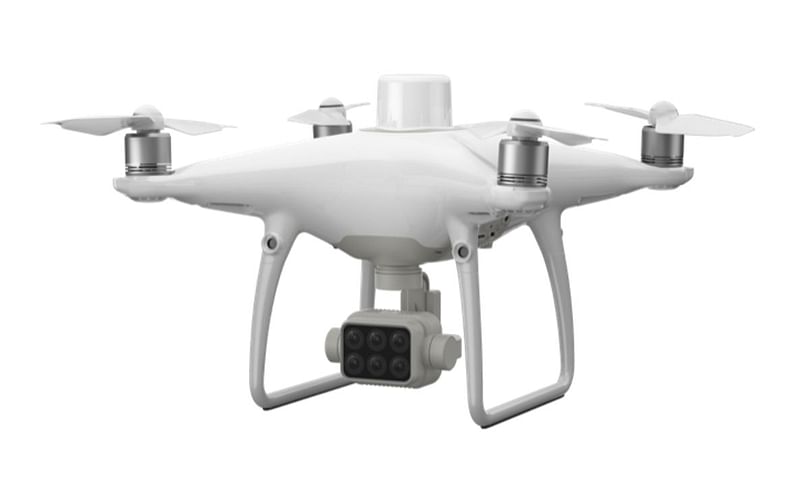
P4 Multispectral
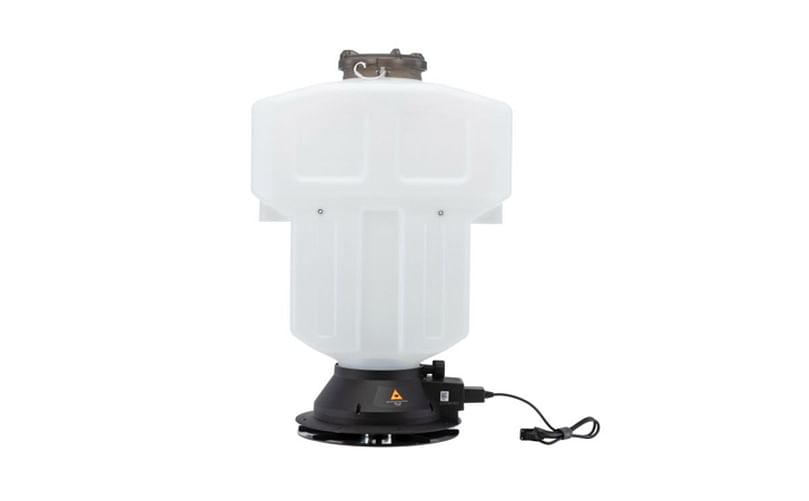
T Series Spreading System 3.0







